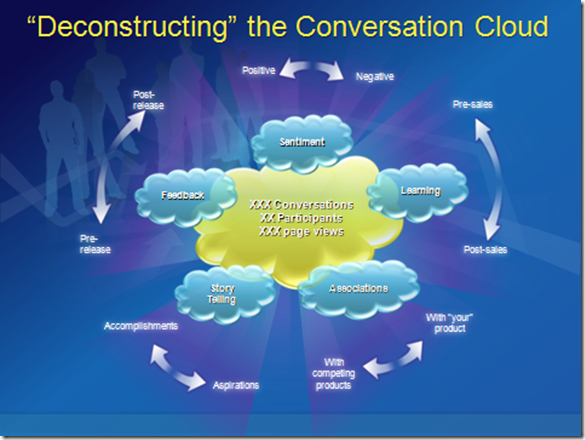As we move from an era of experimentation (flush budgets) to one with much higher accountability for results (frugal investments), it’s even more important to look at why projects fail – and conversely why projects succeed. Plenty has been written on this, so I’ll focus on what is becoming the most common conversation for me with clients – I call it the “general purpose” problem. It’s a derivative of many of the same sorts of issues:
- Tools before strategy
- A lack of clear objectives
- Poor or non-existent governance – that is to say that the person driving it had a goal: “We need a wiki” or “we need a blog” or “we need a discussion board”
I call it the general purpose problem because too often I see brands that are wanting to build general purpose communities for their brand. So, let me ask the why question once again – I feel like I’ve done this here before…
Why are you doing this? What is the specific task that your are trying to enable users to do? If you gave a set of users that task today and watched over their shoulders, how would they do it? Where would they go? What would they find? What would cause them to “turn right” or “turn left” in that discovery process. If you don’t know this and you are trying to build a community – I wish you luck. You have to know the tasks and then you have to make sure that whatever you are going to do with community dramatically improves success with those tasks. The more specific you get your tasks/scenarios the more likely you will succeed. The more specific you define your audience, the more likely you will succeed.
I’m all for a great vision, a clear mission and measurable objectives…but it is time to start writing narratives and your narrative should describe exactly what the task(s) are and how users accomplish them today. Then write the narrative for your “to be” state that articulates both the user and company benefits. If you do this well, design will be sooooo much easier and, even better, that dreaded ROI debate may just go away! How? Well, a well written narrative will explain the benefits to the user and to the business which will help you instrument and measure success in the change.
How do you know if you aren’t quite there? Consider the following dialog:
Bob: “Tell me about you community project".”
Joe: “Well, we are building a community to connect our users and engage our fans”
Bob: “What will your users be able to do there?”
Joe: “It’s an online destination where they can connect, learn and share with each other and us”
Bob: “Connect, learn and share about what?”
Joe: “About our products?”
Bob: “I get that, but which product. Tell me, what are they going to learn there?”
Joe: “Our Flo-Gen product. It’s our best seller. It’s a complicated product, so we are going to have recommended content from us, as well as forums for some of our top users to answer questions about how to set up, install, and get up to speed on the product.”
Bob: “Ok. How do users get help on set up and installation now?”
Joe: “We have a call center and a web site. A few employees blog and I guess there are some 3rd party sites.”
Bob: “Ok, what are the 3 most common set up/installation issues you want to address?”
….etc.
Hopefully you get the idea. I’m not trying to be obnoxious (I hope)…but this is what you have to do…keep asking the next question and really nail the exact tasks or set of tasks you are committed to solving for. Ensure the “juice is worth the squeeze” – meaning, the benefits to you and users is significant in improving it. And frankly, when you think you’ve asked all the questions to understand the tasks, do 4 more things:
1) Ask 3 more questions – just to make sure.
2) Write it all down – seriously!! Write it down. Nobody writes this stuff down. Write it down as a narrative.
3) Validate it and observe it! Make sure these tasks really are the most important, then go watch how users accomplish the task today (and write that down too!)
4) Envision – what are you going to do to improve on what you observed in #3? And it should be a relatively big improvement or it’s likely not going to succeed or be worth doing.
That’s a good start for now. No more general purpose communities – build purpose driven experiences!
good luck!
Sean
Popularity: 14% [?]
Share This





